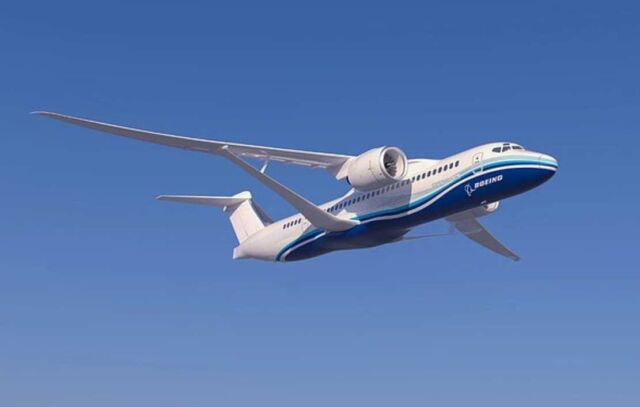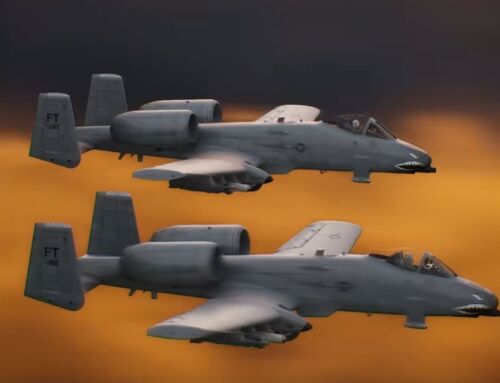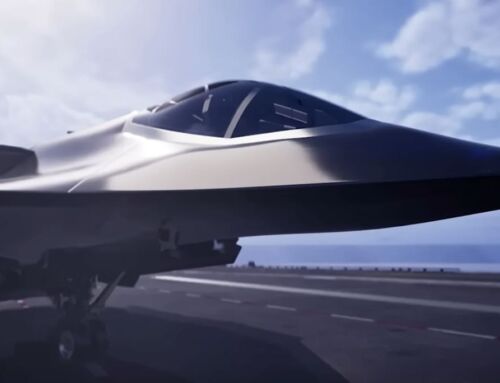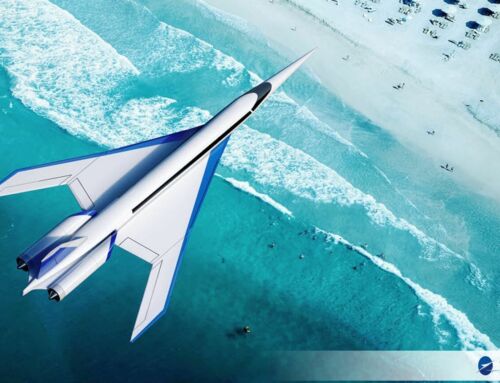
The X-66A is the X-plane specifically aimed at helping the United States achieve the goal of net-zero greenhouse gas emissions by 2050.
Boeing will work with NASA to modify an MD-90 aircraft, and build the X-66A, by shortening the fuselage and replacing its wings and engines.
The resulting demonstrator aircraft will have long, thin wings with engines mounted underneath and a set of aerodynamic trusses for support. The design, which Boeing submitted for NASA’s Sustainable Flight Demonstrator project, is known as a Transonic Truss-Braced Wing.

Credit NASA
The new X-plane seeks to inform a potential new generation of more sustainable single-aisle aircraft – the workhorse of passenger airlines around the world.
NASA Administrator Bill Nelson, said:
“At NASA, our eyes are not just focused on stars but also fixated on the sky. The Sustainable Flight Demonstrator builds on NASA’s world-leading efforts in aeronautics as well as climate. The X-66A will help shape the future of aviation, a new era where aircraft are greener, cleaner, and quieter, and create new possibilities for the flying public and American industry alike.”
Top Image credit NASA





The resultant demonstration aircraft will feature long wings that are relatively thin, with engines located beneath, and a system of aerodynamic trusses that will serve as the aircraft’s support structure.
I keep playing Wave Road! Every time I advance in the game, I find fresh entertainment value.
NASA’s X-66A “Sustainable Flight Demonstrator” aims for greener, cleaner air travel.
Word games are similar to taking a break from work; they allow you to expand your vocabulary without causing you to become bored.
With your valuable input, you’ve transformed my perspective—it’s like seeing the world in high definition for the first time
Thanks for sharing all the other info you do. Where can I find information like this that’s written so well? I’ll keep an eye on information like that.
The X-66A is a huge step toward greener skies—love seeing NASA and Boeing push innovation for a more sustainable future in aviation!
This is such exciting news! It’s great to see NASA putting such a strong focus on sustainable aviation. The X-66A sounds like a truly innovative project that could revolutionize air travel and significantly reduce its environmental impact. I often find myself thinking about the future, sometimes when I’m even just idly playing the Dinosaur Game on Chrome when the internet’s down! It’s inspiring to know that such cutting-edge work is being done to create a greener future for us all.
This is really exciting news! It’s great to see NASA and Boeing collaborating on something so important for the future of aviation. The Transonic Truss-Braced Wing design sounds incredibly innovative. I’m curious to see how the modified MD-90 performs with those long, thin wings. It almost sounds like something out of a sci-fi movie. It makes me wonder if the aerodynamic modeling for such a complex design is becoming increasingly sophisticated, maybe even pushing the boundaries of what’s possible. Speaking of complex simulations, imagining the fluid dynamics involved makes me think about how even something as seemingly simple as flocks of birds can create beautifully complex patterns. It’s like trying to visualize the interaction of a crazy cattle 3D model with all the underlying variables – a real challenge! I’m eager to follow the progress of the X-66A and see how it contributes to achieving those crucial net-zero emissions goals.
I remember touring an old 737 hangar and hearing mechanics talk about fuel-burn tweaks saving airlines millions. Seeing NASA push the X-66A feels like that on a bigger scale—practical innovation with real-world impact. Quieter, greener flights matter to passengers and communities under flight paths. Excited to watch this progress.